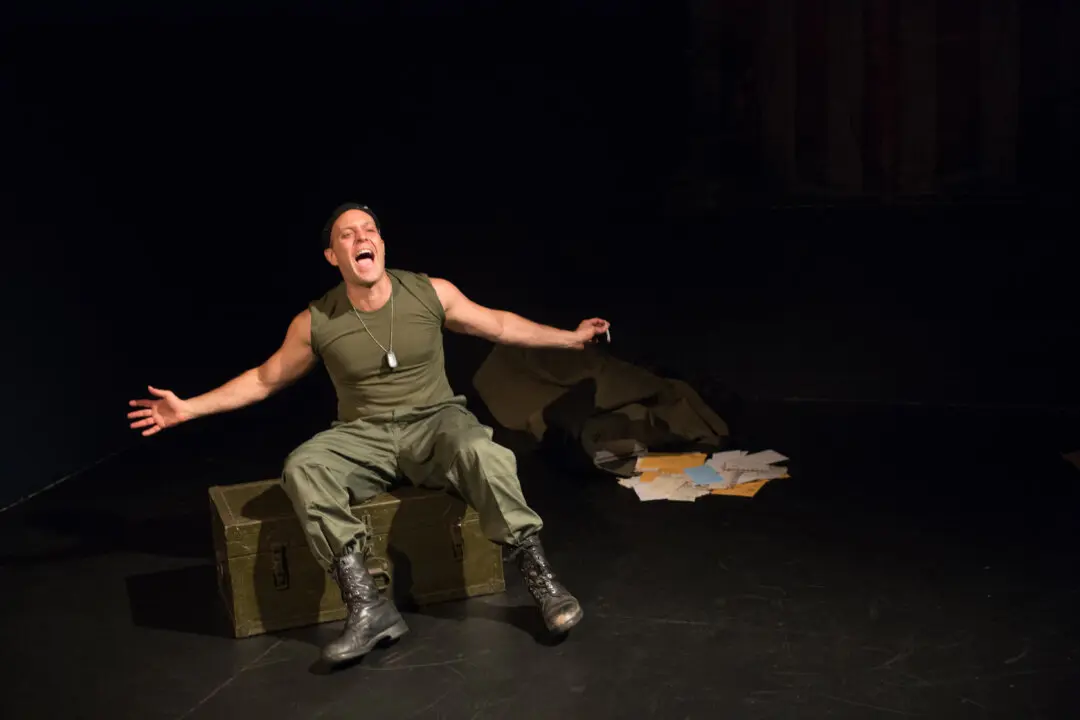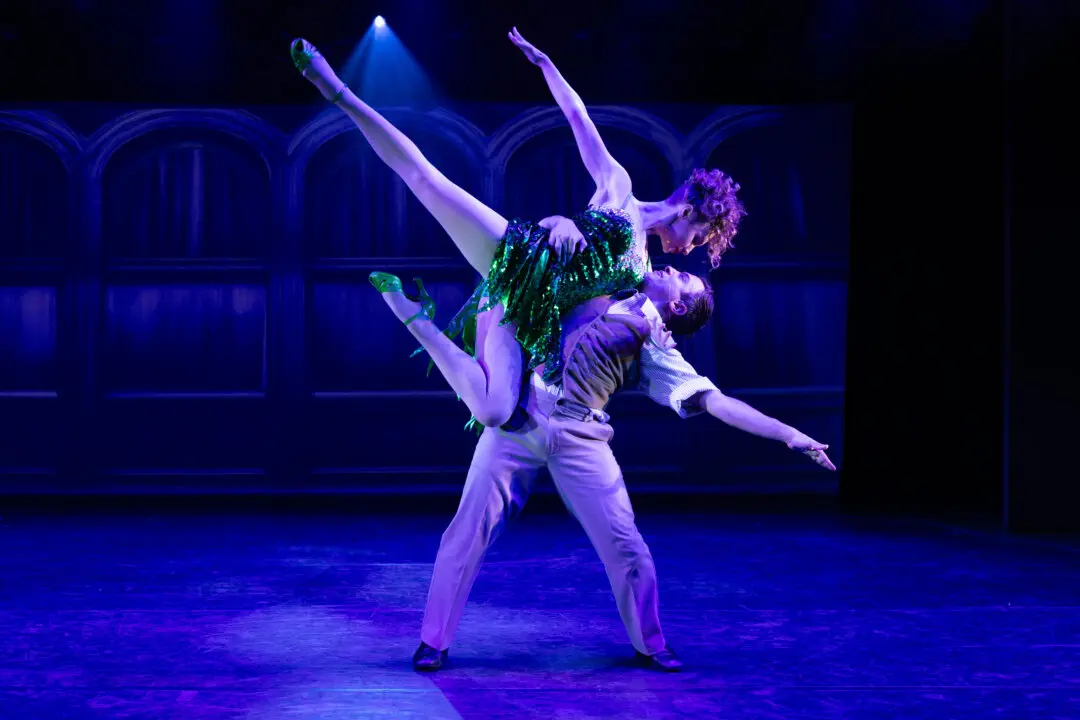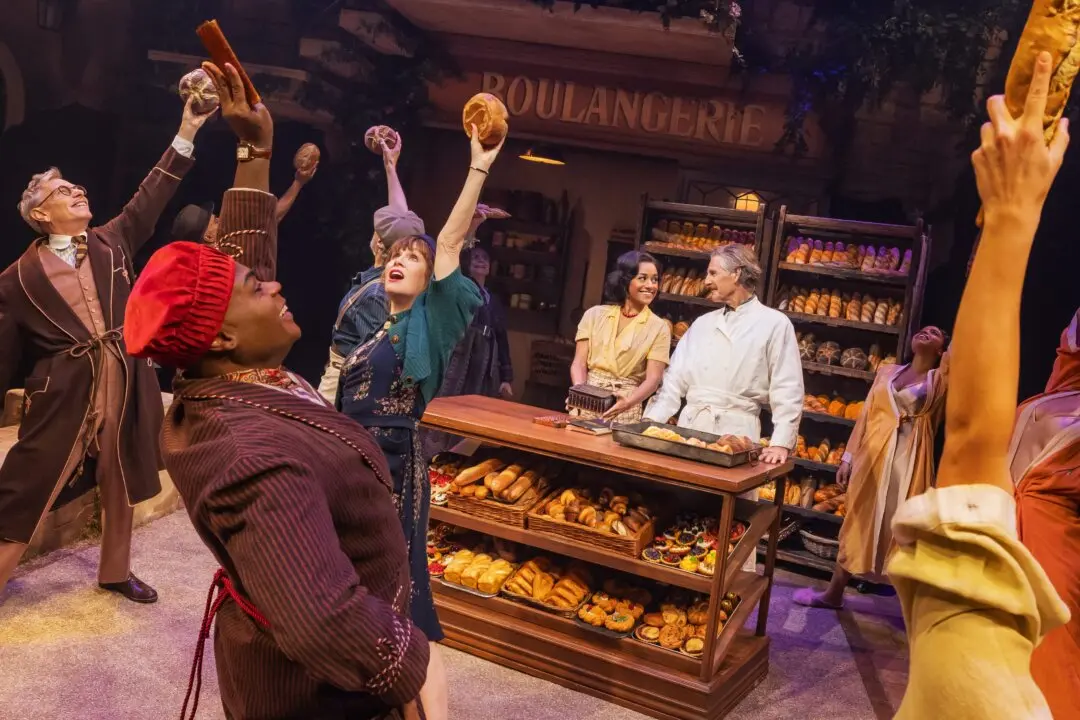NEW YORK—Greg Mullavey does an enjoyable turn as Charles Dickens, offering A Christmas Carol in a site-specific recreation, courtesy of Origin Theatre Company and The American Irish Historical Society.
It’s 1843 in Victorian England or, to put it more accurately, at 991 Fifth Avenue in New York City, home of The American Irish Historical Society. The three story Beaux-Arts mansion, completed in 1901 and restored in 2008, offering the perfect atmosphere for what is to follow
Audience members, numbering no more than 40 per performance, are welcomed into the building, where they’re offered mulled wine and mince pie and then treated to renditions of Christmas carols by The American Academy Choir and the Emerald Footprints Drama Group.
After a time, Dickens descends the staircase, welcoming everyone to his home and inviting them upstairs to his study to hear him read from his about to be published work “A Christmas Carol”—something Dickens actually did in the period leading up to the book’s release.
The story itself focuses on a mean old miser and terrible humanitarian named Ebenezer Scrooge, a man hating anything that interferes with his making money, such as the Christmas holiday. Scrooge considers it particularly galling that he must give his clerk Bob Cratchit the entire day off for no work.
On the evening of this particular Dec. 24, Scrooge is visited by the ghost of his former partner Jacob Marley, as well as three Christmas spirits—the Ghosts of Christmas Past, Christmas Present, and Christmas Yet To Come—all of whom endeavor to teach him the error of his ways.
For a tale that’s became a holiday classic, with more variations and outright parodies than anyone can count, it’s both interesting and enjoyable to hear the original story, albeit in an edited form.
What makes this particular effort stand out is the way it actively engages the audience, forcing them to remain mentally on their toes at all times. Most of the action takes place in their heads as Mullavey passionately describes such occurrences as the transformation of a door knocker to that of a face; a long-since disconnected bell suddenly ringing again and again in gloomy set of rooms; a London street filled with people preoccupied with the Yuletide holiday; and a desolate churchyard where the writing on a gravestone waits to be revealed.
Mullavey makes a good host, enthusiastically throwing himself into the tale and being able to differentiate the various vocal tones and attitudes in the numerous characters. He’s also able to bring the moral of the story to the fore, and ultimately makes one want to go out and buy the book of the Dickens’s tale, or at least download it, to get a fuller version of what is being presented.
To anyone who’s seen a version of the story before, some of the edits are quite noticeable. The sections with Marley and the Ghost of Christmas Past are the most heavily excised. According to the show’s press rep, Mullavey uses a text Dickens himself relied on when performing one-man readings prior to the book’s publication.
While most of the deletions don’t really matter much in regards to the flow of the story, i.e. beginning the sequence in the past when Scrooge is an apprentice at Fezziwig’s instead of earlier in his childhood, they probably should have included the bit about the ghost of Marley being fettered, as that’s a major plot point which impresses on still-disbelieving Scrooge the gravity of his situation.
At the same time, this production offers numerous insights that are often lost in other presentations of the story—such as the names of the Cratchit children and the pride one of them feels when he gets to wear his father’s shirt; as well as telling descriptions of the garments worn by Cratchit and his wife, and the dispensing of the Christmas goose and pudding among the Cratchit family
Matt Torney’s direction is nicely focused, allowing Mullavey to firmly wrap himself in the story he’s emoting, while bringing to life as many of the characters and situations as possible. Of particular interest was a semi-courtship between a fellow named Topper and one of Scrooge’s niece’s sisters during a Christmas party. Another good image created was the fearsome specter of Scrooge himself towering over Cratchit as the later tried to warm himself with a candle. By the way, a “smoking bishop,” mentioned in passing in the story, is an alcoholic drink made from port, red wine, various fruits, sugar and other ingredients.
Helping to add to the overall ambiance is the impressive room where the presentation takes place. It is filled with books and bric-a-brac and could indeed be a study of an English gentleman from a century and a half ago. The clothes Mullavey wears are also appropriate.
The entire experience makes for an enjoyable evening, which shows not only the staying power of the Dickens’s story and what made it irresistible in the first place, but it’s also a chance to see the original tale without all the trappings of later incarnations
A Christmas Carol
American Irish Historical Society
991 Fifth Avenue
Tickets: 212-868-4444 or smarttix.com
Closes: Dec. 14
Running Time: 1 hour, 20 minutes
(Pre-show festivities begin approximately 20 minutes before the show)
Judd Hollander is the New York correspondent for the London publication The Stage.




